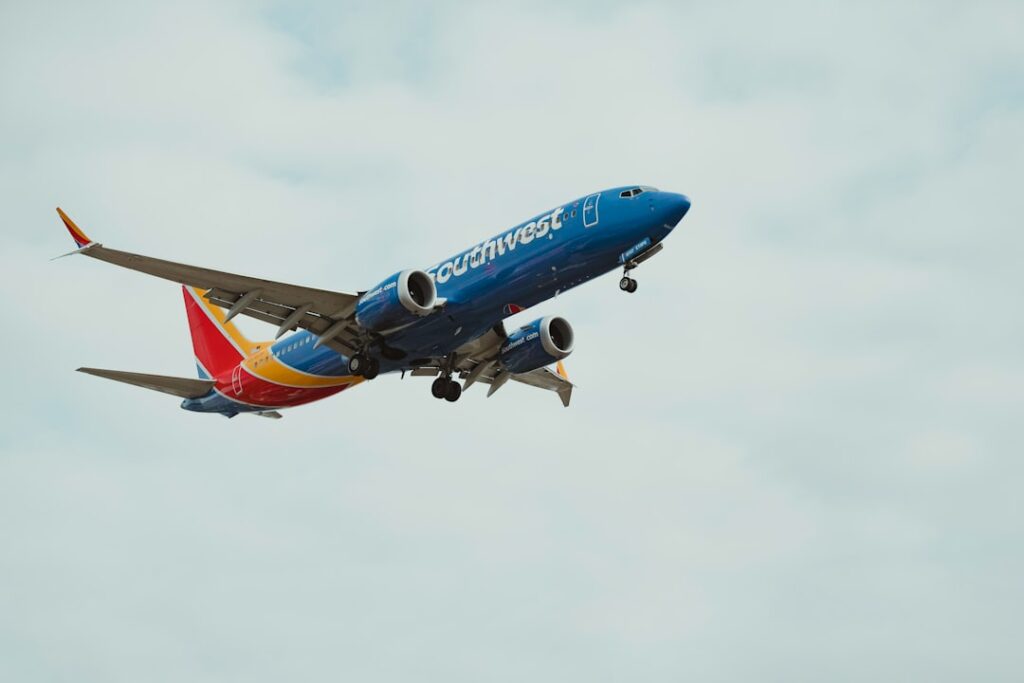Sustainable Aviation Fuel (SAF) is a type of fuel that is produced from renewable and sustainable sources, such as biomass, waste materials, and non-food crops. It is designed to be a drop-in replacement for traditional jet fuel, meaning it can be used in existing aircraft engines without any modifications. SAF is an important tool in reducing carbon emissions in the aviation industry, which is one of the largest contributors to greenhouse gas emissions.
The aviation industry has been under increasing pressure to reduce its carbon footprint and mitigate the environmental impact of air travel. SAF offers a viable solution to this challenge by providing a more sustainable alternative to traditional jet fuel. By using SAF, airlines can significantly reduce their carbon emissions and contribute to global efforts to combat climate change.
Benefits of using SAF in air travel
One of the key benefits of using SAF in air travel is its lower carbon emissions compared to traditional jet fuel. SAF can reduce carbon emissions by up to 80% compared to fossil fuels, making it a crucial tool in achieving the industry’s goal of reducing its carbon footprint. This reduction in carbon emissions not only helps mitigate climate change but also improves air quality around airports and reduces the environmental impact of air travel.
In addition to lower carbon emissions, SAF also offers improved air quality benefits. Traditional jet fuel contains sulfur and other pollutants that contribute to air pollution and have negative health effects. By using SAF, airlines can reduce these pollutants and improve the air quality around airports and in the communities they serve.
Another benefit of using SAF is the reduced dependence on fossil fuels. As traditional jet fuel is derived from crude oil, its availability and price are subject to geopolitical tensions and market fluctuations. By diversifying the sources of aviation fuel through the use of SAF, airlines can reduce their dependence on fossil fuels and create a more stable and sustainable energy supply for the industry.
While the initial cost of SAF may be higher than traditional jet fuel, there is potential for cost savings in the long run. As production capacity increases and economies of scale are realized, the cost of SAF is expected to decrease. Additionally, the potential for carbon pricing and emissions trading schemes can create financial incentives for airlines to use SAF, further driving down costs.
Current challenges in implementing SAF in the aviation industry
Despite the numerous benefits of using SAF, there are several challenges that need to be addressed in order to fully implement its use in the aviation industry.
One of the main challenges is the limited availability and production capacity of SAF. Currently, SAF production is limited and cannot meet the demand of the aviation industry. Scaling up production capacity requires significant investment in infrastructure and technology, as well as the development of a sustainable feedstock supply chain.
Another challenge is the high production costs of SAF. The production process for SAF is more complex and expensive compared to traditional jet fuel. This is due to the use of sustainable feedstocks and the need for additional refining processes. As a result, SAF is currently more expensive than traditional jet fuel, making it less economically viable for widespread adoption.
Furthermore, there is a lack of infrastructure for the distribution and storage of SAF. Existing infrastructure is designed for traditional jet fuel and may not be compatible with SAF. This poses a challenge in terms of logistics and supply chain management, as well as the need for investment in new infrastructure to support the widespread use of SAF.
Innovations in SAF production technology
Despite the challenges, there have been significant advancements in SAF production technology that are helping to overcome these barriers.
New methods for producing SAF from sustainable sources are being developed and tested. These include technologies such as hydrothermal liquefaction, which converts biomass into a crude oil-like substance that can be further refined into SAF. Other methods include pyrolysis, gasification, and fermentation, which can convert waste materials and non-food crops into SAF.
Advancements in conversion technology are also improving the efficiency and cost-effectiveness of SAF production. These include catalysts and refining processes that can convert sustainable feedstocks into high-quality SAF with minimal energy input and waste generation. These advancements are helping to reduce the production costs of SAF and make it more economically viable for widespread adoption.
Collaborations between industry and academia are also playing a crucial role in improving SAF production efficiency. These partnerships allow for the sharing of knowledge, expertise, and resources, which can accelerate the development and commercialization of new SAF production technologies. By working together, industry and academia can overcome technical challenges and drive innovation in SAF production.
Government policies and regulations promoting the use of SAF
Government policies and regulations play a crucial role in promoting the use of SAF in the aviation industry. International agreements and targets for reducing carbon emissions in the aviation sector have created a framework for action and set clear goals for the industry to work towards.
For example, the International Civil Aviation Organization (ICAO) has set a target to achieve carbon-neutral growth from 2020 onwards and to reduce net aviation CO2 emissions by 50% by 2050 compared to 2005 levels. This target has been adopted by many countries and provides a roadmap for the industry to follow.
In addition to targets, governments are also providing incentives and subsidies for SAF production and adoption. These incentives can take the form of tax credits, grants, or loan guarantees, which help offset the higher production costs of SAF and encourage its use by airlines. By providing financial support, governments are helping to create a market for SAF and stimulate investment in production capacity.
Furthermore, carbon pricing and emissions trading schemes can also promote the use of SAF by creating a financial incentive for airlines to reduce their carbon emissions. These schemes put a price on carbon emissions and allow airlines to trade emission allowances, creating a market-based mechanism for reducing emissions. By including aviation in these schemes, governments can encourage airlines to use SAF and reduce their carbon footprint.
SAF adoption by major airlines and airports

Several major airlines and airports have already started using SAF as part of their sustainability initiatives. These initiatives aim to reduce the environmental impact of air travel and contribute to global efforts to combat climate change.
For example, airlines such as KLM, Lufthansa, and United Airlines have all conducted flights using SAF. These flights demonstrate the technical feasibility of using SAF in commercial aviation and help raise awareness about its benefits. In addition to individual airlines, there are also industry-wide collaborations and partnerships that aim to increase SAF adoption.
One such collaboration is the Sustainable Aviation Fuel Users Group (SAFUG), which is a coalition of airlines and aviation stakeholders committed to accelerating the development and deployment of SAF. SAFUG members include major airlines such as Delta Air Lines, British Airways, and Cathay Pacific, as well as aircraft manufacturers and fuel suppliers. By working together, these stakeholders can share best practices, collaborate on research and development, and advocate for policies that support SAF adoption.
While there has been progress in SAF adoption, there are still challenges and opportunities for scaling up its use. One of the main challenges is the limited availability of SAF. As mentioned earlier, production capacity needs to be scaled up in order to meet the demand of the aviation industry. This requires significant investment in infrastructure and technology, as well as the development of a sustainable feedstock supply chain.
However, there are also opportunities for increasing SAF adoption. For example, partnerships between airlines and fuel suppliers can help secure long-term supply agreements for SAF. These partnerships can provide the necessary financial support and market demand to incentivize investment in production capacity.
Cost implications of using SAF in air travel
The cost of SAF is currently higher than traditional jet fuel due to the higher production costs associated with sustainable feedstocks and refining processes. However, there is potential for cost savings in the long run as production capacity increases and economies of scale are realized.
The current cost of SAF is influenced by several factors, including the cost of feedstocks, the cost of refining processes, and the cost of distribution and storage. Sustainable feedstocks, such as biomass and waste materials, can be more expensive than crude oil due to their limited availability and the additional processing required to convert them into SAF.
Refining processes for SAF also require additional investment in infrastructure and technology, which can increase production costs. However, advancements in conversion technology are helping to improve the efficiency and cost-effectiveness of these processes, which can help reduce the overall cost of SAF production.
Distribution and storage costs are another factor that can affect the cost of SAF. As mentioned earlier, there is a lack of infrastructure for the distribution and storage of SAF, which can increase logistics costs. However, as the demand for SAF increases and infrastructure is developed, these costs are expected to decrease.
Despite the current higher cost of SAF, there is potential for cost savings in the long run. As production capacity increases and economies of scale are realized, the cost of SAF is expected to decrease. Additionally, the potential for carbon pricing and emissions trading schemes can create financial incentives for airlines to use SAF, further driving down costs.
SAF’s impact on reducing carbon emissions and mitigating climate change
The use of SAF has the potential to significantly reduce carbon emissions in the aviation industry and contribute to global efforts to mitigate climate change.
The aviation industry is one of the largest contributors to greenhouse gas emissions, accounting for approximately 2% of global CO2 emissions. By using SAF, airlines can reduce their carbon emissions by up to 80% compared to traditional jet fuel. This reduction in carbon emissions not only helps mitigate climate change but also improves air quality around airports and reduces the environmental impact of air travel.
In addition to reducing carbon emissions, SAF also has the potential to contribute to global efforts to achieve net-zero emissions in the aviation industry. Net-zero emissions refers to the balance between the amount of greenhouse gases emitted and the amount removed from the atmosphere. By using SAF, airlines can reduce their carbon footprint and offset any remaining emissions through carbon offset projects, such as reforestation or renewable energy projects.
Future prospects and potential of SAF in revolutionizing air travel
The future prospects and potential of SAF in revolutionizing air travel are promising. There is a growing recognition of the need to reduce carbon emissions in the aviation industry, and SAF offers a viable solution to this challenge.
The potential for increased SAF production and adoption in the coming years is significant. As mentioned earlier, there are advancements in SAF production technology that are improving efficiency and reducing costs. These advancements, coupled with government policies and industry collaborations, are creating an enabling environment for increased SAF production capacity.
Innovation and technology will play a crucial role in improving SAF production efficiency. Continued research and development efforts are needed to further optimize conversion processes, develop new feedstocks, and improve refining techniques. By investing in innovation and technology, the aviation industry can continue to improve the sustainability of air travel and reduce its environmental impact.
Collaboration and partnerships are also important in scaling up SAF use. By working together, airlines, fuel suppliers, governments, and other stakeholders can share best practices, collaborate on research and development, and advocate for policies that support SAF adoption. These collaborations can help overcome technical challenges, drive innovation, and create a market for SAF.
Conclusion and call-to-action for a sustainable aviation industry
In conclusion, Sustainable Aviation Fuel (SAF) is a crucial tool in reducing carbon emissions in the aviation industry. By using SAF, airlines can significantly reduce their carbon footprint, improve air quality, reduce dependence on fossil fuels, and potentially achieve cost savings in the long run.
However, there are challenges that need to be addressed in order to fully implement SAF in the aviation industry. These include limited availability and production capacity, high production costs, and a lack of infrastructure for distribution and storage. Despite these challenges, there have been significant advancements in SAF production technology, and government policies and regulations are promoting its use.
The adoption of SAF by major airlines and airports, as well as collaborations and partnerships, are driving increased SAF use. While the cost of SAF is currently higher than traditional jet fuel, there is potential for cost savings in the long run. The impact of SAF on reducing carbon emissions and mitigating climate change is significant, and it plays a crucial role in achieving net-zero emissions in the aviation industry.
The future prospects and potential of SAF in revolutionizing air travel are promising. Increased SAF production and adoption, coupled with innovation and technology advancements, can help create a more sustainable aviation industry. Collaboration and partnerships are key in scaling up SAF use and driving innovation.
In conclusion, it is important for individuals and organizations to support a sustainable aviation industry through the use of SAF and other initiatives. By choosing airlines that use SAF, advocating for government policies that promote its adoption, and supporting research and development efforts, we can all contribute to a more sustainable future for air travel.
If you’re interested in the latest advancements in sustainable aviation fuel, you won’t want to miss this fascinating article from AI TV. They explore how artificial intelligence is revolutionizing the aviation industry and its impact on reducing carbon emissions. Discover how AI is being used to develop more efficient and eco-friendly aviation fuels, making air travel more sustainable for the future. Check out the article here to learn more about this exciting development in sustainable aviation fuel.



